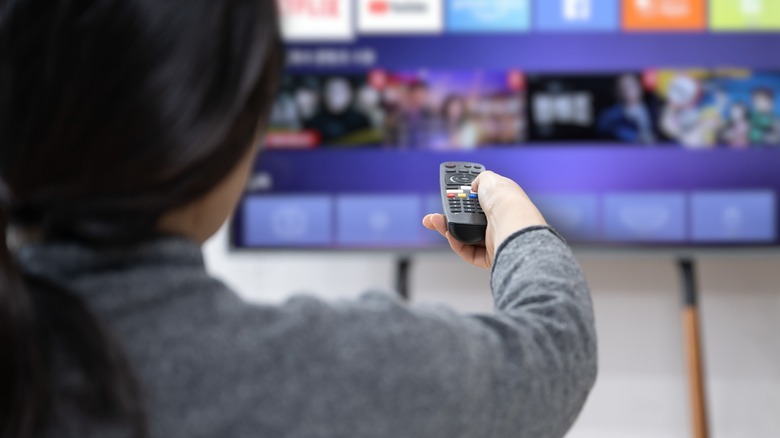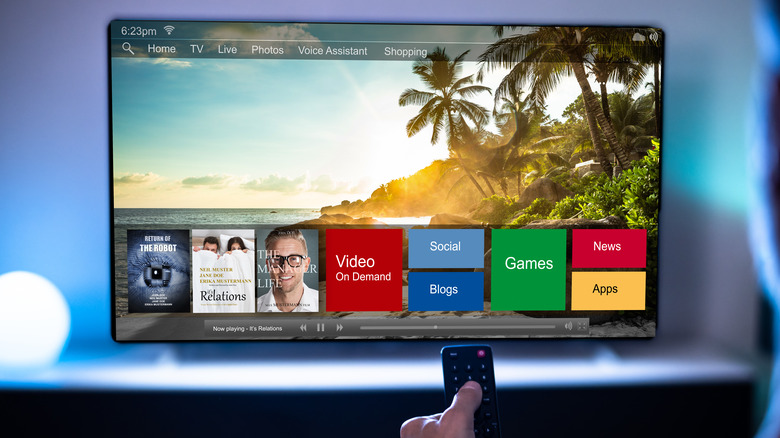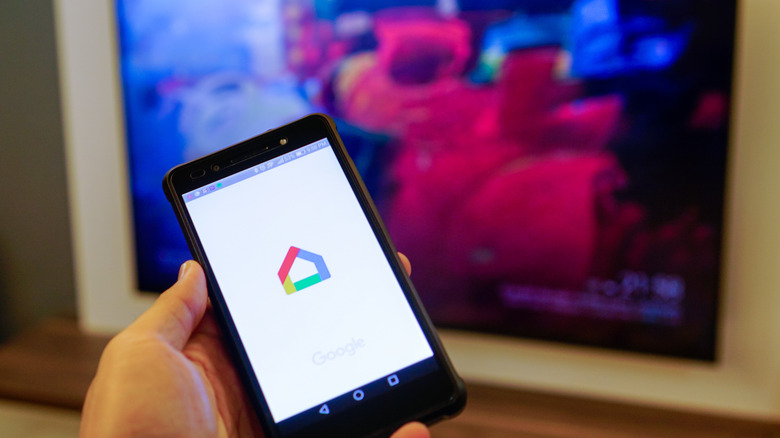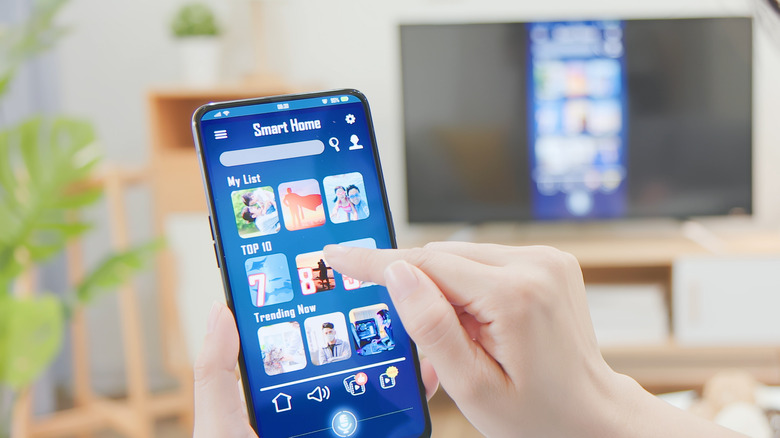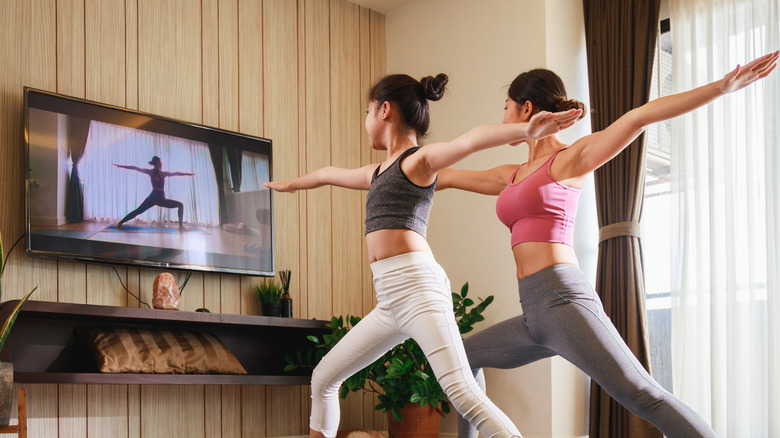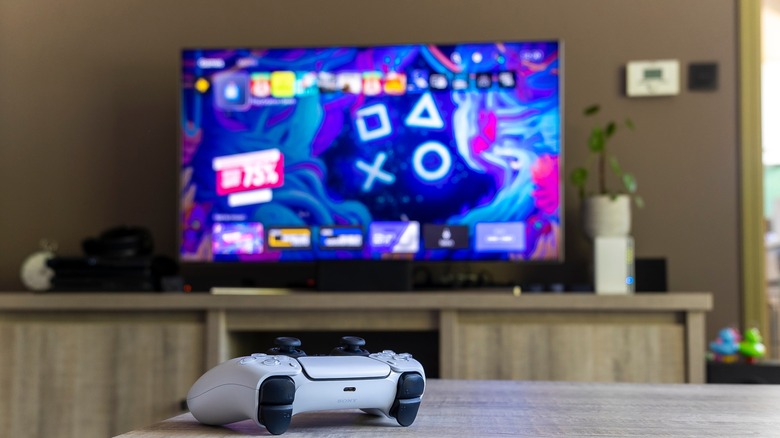5 Features That Will Change The Way You Use Your Smart TV
We may receive a commission on purchases made from links.
From having only five channels to choose from, to getting access to millions of videos, the transformation of TVs has truly gone a long way. Now, they're called smart TVs, and these nifty devices changed the landscape of at-home entertainment for the better. A variety of content like shows, movies, and user-generated videos became available right at your fingertips.
However, if you think that viewing content is all that smart TVs can offer, you'll be surprised to learn that they actually come packed with more features than you can imagine. These game-changing functionalities take your smart TV experience to the next level and change the way you use your device.
You have integrated apps that give your TV plenty of new capabilities. There's also voice control for controlling your TV hands-free, screen mirroring for duplicating your phone's content on the big screen, 4K picture quality for immersive gaming, and even compatibility with smartwatches for better workout sessions. Let's dive into these features in more detail.
Integrated apps
The best thing about smart TVs is that they can turn into virtually anything you want. This is possible with their capability to download and install apps. Simply connect your device to the internet, look for the app store (some TVs have Google Play Store, others have a proprietary app store like Roku), and then download your apps of choice.
If you're not sure what apps to add to your smart TV, here are a few of the best ones to get you started:
- Kitchen Stories: Change the way you make dinner by installing a smart TV in your kitchen and using it as a digital recipe book. Kitchen Stories has dozens of recipes for you to try, most of which come with HD video instructions to make cooking a whole lot easier.
- Spotify: If you're tired of hopping on YouTube every time you want to listen to your favorite hits, you should consider installing Spotify on your smart TV instead. It works a lot like the mobile app, so you won't have trouble finding your way around.
- AccuWeather: This is a dedicated app for all your weather forecast needs. It can come in handy when you keep on missing the local weather report, or just don't like having to search for the forecast online.
Voice control
Why go through the hassle of pushing buttons on your remote control when you can control your smart TV in a more convenient way? Most smart TVs in the market today already come complete with built-in voice assistants, making it super easy to interact with your TV using just your voice. Amazon Alexa and Google Assistant are the two most common voice assistants integrated into smart TVs. However, you can also find others like Samsung's Bixby and LG's ThinQ AI.
What exactly can you use the voice assistant for? Well, there's a host of things you can do with its help, from changing the channel and finding new action shows, to getting the current weather conditions and having your personal photos displayed. You can even use the voice assistant to search the web for you, and control your other smart devices like your lights and security cameras.
To use your smart TV's voice control, all you have to do is press and hold a dedicated button on your remote control (assuming your TV has one), speak your command, and your smart TV will immediately do your bidding.
Screen mirroring
There will be instances when you're working on something with your phone or tablet and realize you need a larger screen to get it done faster and more efficiently. Say you're typing data into a spreadsheet, or playing a hidden object game — that's where your smart TV's screen mirroring feature comes into the picture.
Screen mirroring is just as its name suggests: it mirrors your screen onto another device, in this case being your smart TV. The smart TV replicates exactly what is displayed on your phone or tablet, so you can get your work done or enjoy your game better. The best part is that most mobile devices already have casting or screen-sharing features, eliminating the need to install or set up additional apps.
You also don't have to get any cables to use screen mirroring, you just need to connect your phone/tablet to the TV using the same wireless network. Then, from your phone, tap on the "Cast" button (or a similar option) and select your smart TV from the list. You will see your phone screen displayed on your TV almost immediately.
Compatibility with fitness watches
Smartwatches have made working out a breeze. You no longer have to guess how long you've been running or how many calories you've burned so far. All you need to do is look down at your wrist to know anything from your heart rate to your workout duration. However, doing so can be a bit of a distraction, especially if you're following a workout tutorial on YouTube. It's hard to focus when you keep glancing at your watch every now and then.
Fortunately, smart TVs have made getting in shape a lot more convenient. Not only do they offer a variety of fitness apps, but some are also readily compatible with fitness watches.
When you connect your smartwatch to your smart TV, your real-time fitness stats will get displayed on the larger screen for your convenience. Now you can watch both your stats and your workout at the same time. Some smart TVs that have this capability include Apple TVs and Samsung TVs, both of which have proprietary fitness apps installed.
External enhancements
Smart TVs are also capable of enhancing external sources to make the viewing (and playing) experience more immersive and impressive. These days, smart TVs are perfect for gaming, too.
Simply connecting the TV to your console or PC can let you appreciate the more detailed visuals, but TVs from manufacturers like TCL even have features like "Auto Game Mode" that detect gaming peripherals and optimize their HDMI inputs for low latency. This means good picture quality in games, without compromising on input lag from your controller and console.
Another notable display feature of most smart TVs is ambient light detection. This works much like your phone's adaptive brightness: it automatically adjusts the brightness of your TV screen depending on the ambient light in the room. That means if you're watching in a bright room, the screen will also be set to bright. If you're in a dark room, however, the screen will be dimmer.
Some smart TVs also come with immersive lighting. This is essentially a set of LED lights on the back of the TV that dances in sync with whatever you're watching and projects the same colors on the wall. It makes your screen look bigger than it really is, and gives you a cinematic atmosphere right in the comforts of your home. While you won't find OEM immersive lighting on any other manufacturer other than Philips, you can buy a DIY immersive lighting kit and connect it to your existing TV.
